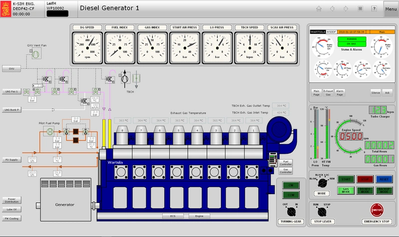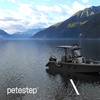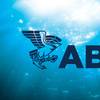DNV GL Approves Kongsberg Engine Room Simulators
Kongsberg Digital has received DNV-GL statements of compliance for two of its newest Engine Room Simulator models designed to provide in-depth training on the K-Sim Engine simulator platform.
The DNV GL-ST-033 March 2017 Maritime Simulator Systems certification, which is based on the requirements of STCW Convention, Regulation I/12, was awarded to the DEDF Cruise Ferry and L11 MAN 6S70 ME SCC K-Sim Engine models in December 2017.
Now commercially available to all K-Sim Engine users, the K-Sim Engine DEDF Cruise Ferry is the first model approved according to the new Class S (Special Task) standard for simulators used for training ship's officers on-board a vessel using LNG as fuel. The standard was launched after IMO added aspects of the International Code of Safety for Ships using Gases or other Low-flashpoint Fuels (IGF Code), including LNG fuel handling and bunkering, to Standards of Training, Certification and Watch keeping (STCW) in 2017.
The certification verifies that the DEDF Cruise Ferry model for K-Sim Engine meets approved standards to deliver training that complies with the IGF (STCW) code including functions for LNG Bunkering Operation, LNG Behaviour (Quality), Operational Principles of Dual Fuel Generator Installations and the Fundamentals of Automation, Instrumentation and Control Systems.
The DEDF Cruise Ferry model is designed for training courses aimed at ship officers (deck and engine) that intend to work on an LNG-fuelled vessel. LNG fuelled ship-owners are responsible to ensure that crew members are able to recognise risks, be aware of specific points of attention related to LNG, and operate the related systems. They must also be able to perform LNG-bunkering operations (shipboard) in a safe and controlled manner, recognise potential problems and handle emergencies related to LNG, all of which are operations available in the DEDF Cruise Ferry model on K-Sim Engine simulators.
“It’s vital that we continuously develop K-Sim Engine to ensure we can enable our customers to deliver training courses that meet the latest standards in the industry, such as the IGF Code,” said Leif Pentti Halvorsen, Product Manager, Kongsberg Digital. “With this approval from DNV GL, K-Sim Engine is the first maritime simulator to be certified to this level, making it a vital tool for the maritime industry to start reducing its environmental footprint safely and effectively.”
DNV GL certification for the new low-speed engine room simulator model, K-Sim Engine MAN 7S60 ME-C Suezmax Crude Oil carrier reflects compliance with all Class A requirements and additional Class S requirements for simulators used for training ship’s electrical officers. It is based on real data from the engine room of a 152,000 dwt double hull Suezmax Crude Oil Carrier with 12 cargo tanks, 2 slop tanks and 9 segregated ballast tanks propelled by a modern electronically controlled MAN low-speed 6S70ME-C engine, with a nominal continuous power output of 18660 kW at 91 rpm. The electrical power plant includes 3 diesel generators. The steam plant includes two aux. oil fired boilers as well as an exhaust boiler, whilst the cargo pumps are driven by 3 steam turbines.
The dynamic behavior of the MAN 7S60 ME-C Suezmax Crude Oil model for K-Sim Engine matches the response of the real engine to ensure highly realistic training. Since environmental concerns have become an important part of operating a vessel, the optimisation of engine performance is essential, so Kongsberg Digital has placed significant effort into replicating the engine control system (ECS) designed by MAN. The ECS facilitates monitoring and control of starting air valves, governor functions, aux. blowers, fuel injection, exhaust valves and cylinder lubricators. Further, to enable low emission operation in ECA (Environmental Control Areas), fuel tanks for low Sulphur HFO as well as exhaust gas scrubber are included in the model.











